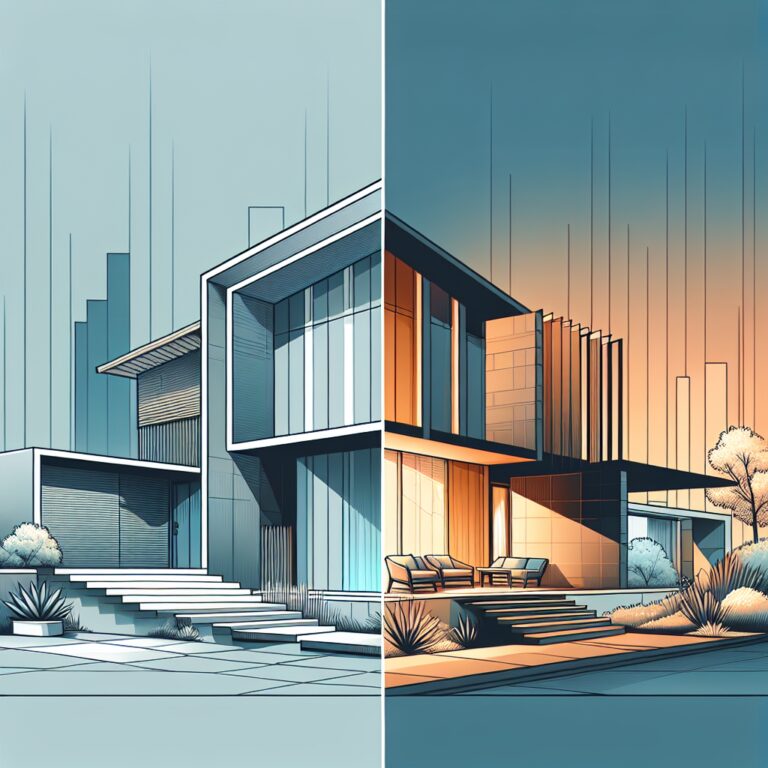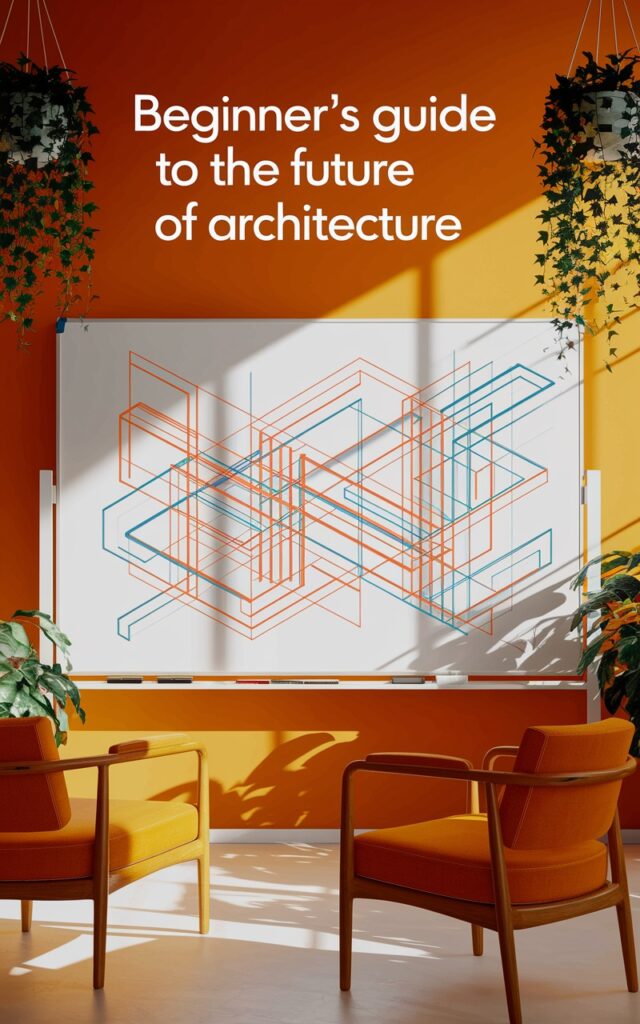The rigid geometry that once dominated our living spaces is giving way to something far more natural and inviting. As you walk through contemporary homes today, you might notice how the sharp corners and straight lines of yesteryear are being replaced by gentle curves, flowing forms, and organic shapes. *Where mathematics meets artistry, our homes become living sculptures that speak to our fundamental human connection with nature’s flowing contours.* This transformation isn’t merely aesthetic—it represents a profound shift in our relationship with domestic spaces, influenced significantly by parametric design’s revolutionary approach. By using algorithmic thinking to generate complex curved geometries that would be impossible to conceptualize manually, designers are creating environments that feel simultaneously innovative and timeless, technological and deeply human.# How Curved Lines are Replacing Sharp Edges in Modern Homes
Remember walking into a friend’s ultra-modern home filled with sharp corners and rigid furniture? That sleek but somewhat unwelcoming feeling is giving way to something entirely different in today’s design landscape.
*The quiet revolution of curves is transforming our living spaces from architectural showcases into nurturing sanctuaries that speak to our deepest desire for comfort.*
The Return to Organic Forms
When you step into a contemporary home today, you might notice something subtly different—the harsh angles and straight lines that dominated interiors for decades are softening. This shift toward interior fluidity isn’t merely aesthetic; it represents a fundamental change in how we think about our living spaces.
The human body contains very few straight lines or sharp corners. Our natural environment—from rolling hills to flowing rivers—features curves, not grid patterns. Our return to curved elements in home design reflects a deeper psychological truth: we find organic shapes inherently comforting.
The Psychology Behind the Curve
Research in environmental psychology confirms what many of us intuitively feel: curved spaces affect us differently than angular ones. Studies show that people associate curved forms with:
- Feelings of safety and protection
- Lower stress responses
- Greater sense of calm
- Improved social connection
When we’re surrounded by gentle arcs rather than sharp corners, something in our ancient brain relaxes. The safety and softness communicated by curves speaks to our primal need for shelter without threat.
Think about it—have you ever noticed how people naturally gather in spaces with curved seating? Or how a rounded archway feels more inviting than a rectangular doorframe? These aren’t coincidences but expressions of our innate response to form.
Parametric Design: Technology Meets Organic Forms
The growing presence of curves in modern homes owes much to advancements in design technology. Parametric design—a method that uses algorithms to create complex geometries—has revolutionized what’s possible in residential architecture and furniture design.
Unlike traditional drafting, parametric design uses mathematical relationships to generate forms that would be nearly impossible to conceptualize through conventional methods. This approach allows designers to create objects and spaces with curved geometry that mimics patterns found in nature.
From Screen to Living Room
What makes parametric design particularly relevant to the curved revolution is how it bridges the gap between imagination and execution. Just a decade ago, creating a perfectly curved wall or an organically shaped sofa required prohibitive cost and expertise. Today, parametric tools allow for:
- Precise modeling of complex curved surfaces
- Cost-effective manufacturing through digital fabrication
- Customization based on specific spatial needs
- Optimization for both aesthetics and functionality
Consider the statement ceiling with gentle waves, the seamlessly curved kitchen island, or the perfectly fluid built-in seating that seems to grow from the floor. These elements of organic home design are direct products of parametric innovation.
The Fluidity of Modern Living Spaces
Beyond individual design elements, curves are changing how spaces connect and flow. Traditional homes compartmentalized life—cooking happened exclusively in kitchens, relaxation in living rooms. Modern curved design breaks these rigid boundaries.
Spatial flow created by curved walls, arched doorways, and rounded transitions allows spaces to blend into one another. This fluidity reflects how we actually live—multitasking, connecting, moving between activities without rigid delineation.
Creating Conversation Zones
Notice how curved sectional sofas naturally create conversation pockets? Unlike their linear counterparts that force people into formal, row-like seating arrangements, curved furniture encourages eye contact and interaction.
Think of the difference between sitting at a rectangular conference table versus a round one. The same principle applies in our homes—curved arrangements foster connection rather than separation. When paired with other rounded elements, they create spaces that feel both intimate and spacious simultaneously.
Curved Furnishings: Function Meets Comfort
Perhaps the most accessible entry point to this design trend is through parametric furniture—pieces that embrace organic forms through mathematical precision. Unlike the rigid, boxy furniture of minimalist design, these pieces prioritize both visual softness and physical comfort.
The curved sofa, once considered a design statement for only the boldest homes, has become mainstream. Rounded coffee tables have replaced sharp-cornered ones. Even storage solutions are embracing gentle curves rather than strict geometries.
Practical Benefits Beyond Aesthetics
What many homeowners discover after embracing curved furniture is that the benefits extend beyond visual appeal:
- Improved traffic flow around furniture pieces
- Safer environments for children and elderly family members
- More efficient use of space, especially in corners
- Greater adaptability to different room configurations
Consider the rounded kitchen island that allows people to gather comfortably from all sides, or the curved desk that ergonomically accommodates your natural sitting position. These pieces work with our bodies rather than forcing us to adapt to rigid forms.
Balancing Curves with Structure
Embracing curves doesn’t mean abandoning all straight lines. The most successful modern interiors find harmony between organic forms and necessary structure. This balance creates spaces that feel both grounded and free-flowing.
Look closely at homes featured in design magazines—even the most curve-centric spaces maintain some rectilinear elements for contrast and stability. The art lies in knowing where to soften and where to maintain definition.
Creating Your Curved Sanctuary
If you’re intrigued by this evolution toward softer spaces, consider starting small:
- Introduce a curved sofa or round coffee table as a focal point
- Replace rectangular mirrors with circular or oval alternatives
- Add arched doorways during your next renovation
- Incorporate rounded light fixtures that cast soft, diffused light
Even simple changes—like swapping out sharp-cornered side tables or adding circular rugs—can significantly shift how a space feels. The goal isn’t to eliminate straight lines entirely but to find a balance that feels right for your lifestyle.
The Future of Curved Design
As technology continues to advance, we’re likely to see even more innovation in curved architectural and furniture design. 3D printing and advanced manufacturing techniques are making complex curved forms increasingly accessible to average homeowners.
The most exciting development may be how curved design is becoming more sustainable. Parametric approaches allow designers to optimize material usage, reducing waste while creating forms that are both beautiful and structurally sound.
What began as a high-end design trend has evolved into a fundamental shift in how we think about our living spaces. The move toward curves reflects something deeper than fashion—it represents our desire to create homes that nurture rather than merely showcase, that welcome rather than impress.
As you consider your next home renovation or furniture purchase, pay attention to how different shapes make you feel. You might discover that the gentle embrace of a curved space is exactly what your home has been missing.
Your Space, Your Story: Let’s Build Forward
Whether reimagining a ceiling, transforming a wall, or redefining a facade, the journey of design is about uncovering potential. This blog explored how intentional choices in these elements can elevate both aesthetics and meaning in your space. Remember:
Now it’s your turn. What walls will you reimagine? How will your ceilings reflect your ambitions? Share your vision below or tag us in your next project – let’s turn ideas into action, one intentional design choice at a time. 🔨✨




